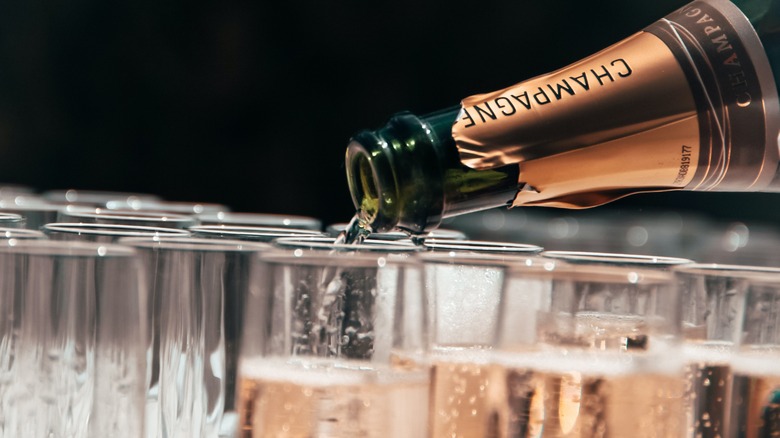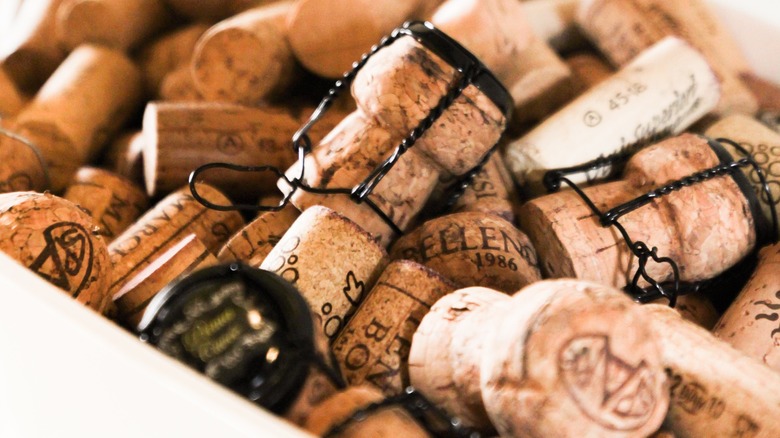The Drastic Way Climate Change Is Impacting The Champagne Industry
There is no drink that's more fancy or celebratory than fabulously fresh, luxurious Champagne. From Brut (bone dry) to Doux (super sweet), Wine Folly explains that Champagne is often made from a blend of Chardonnay, Pinot Noir, and Pinot Meunier, and tends to have aromas of white fruit, citrus, and buttery brioche (though this can vary based on how a wine is produced).
But what if rising temperatures meant that a flute of bubbly might be harder to come by — or worse yet, that it could become a different drink entirely? Based on research conducted by NASA, the average global temperature has increased by almost 2 degrees Fahrenheit in the last century, which has led to droughts, rising sea levels, and extreme weather patterns, all of which have had an impact on wine grapes.
Where grapes grow and how they are grown play a huge role in determining what a glass of wine tastes like. That said, rising temperatures can start to diminish the delicate flavors that are characteristic of a terroir, in addition to increasing sugar and alcohol levels, notes Wine Enthusiast. This is precisely why Champagne growers have had to reconsider how the sparkling wonder should be made.
Maintaining Champagne's integrity relies on early harvests
According to Reuters, Charles Philipponnat, president of the family-owned Philipponnat Champagne winery, explains that the record-breaking temperatures in France have meant less rain and better ripening without rotting, unlike last year's vintage. However, the heat has also posed a threat of over-ripening, making grapes prime for picking in August rather than September. But what does an earlier harvest actually mean?
Laurent Pinson, a Chablis producer in Burgundy, explained that in the 1980s, harvests typically happened during October, but climate change has slowly nudged the season earlier each year (via RTÉ). Naturally, in order to protect Champagne grapes from becoming too jammy or tropical, winemakers in the region are feeling the pressure to change their philosophies on the way they make wine, whether that be through adopting other grape varieties or experimenting with different methods of cultivation.
In fact, Forbes reports that many winemakers in places like the U.S. and Spain are adapting in similar ways by planting more resilient varieties, but also trying to make sustainable choices to reduce carbon emissions, promote soil health, incorporate renewable energy sources, and even switch to more eco-friendly packing. While there isn't a singular solution, Champagne producers (among others) will need to start re-envisioning their craft. After all, a world without bubbly would be unthinkable.

